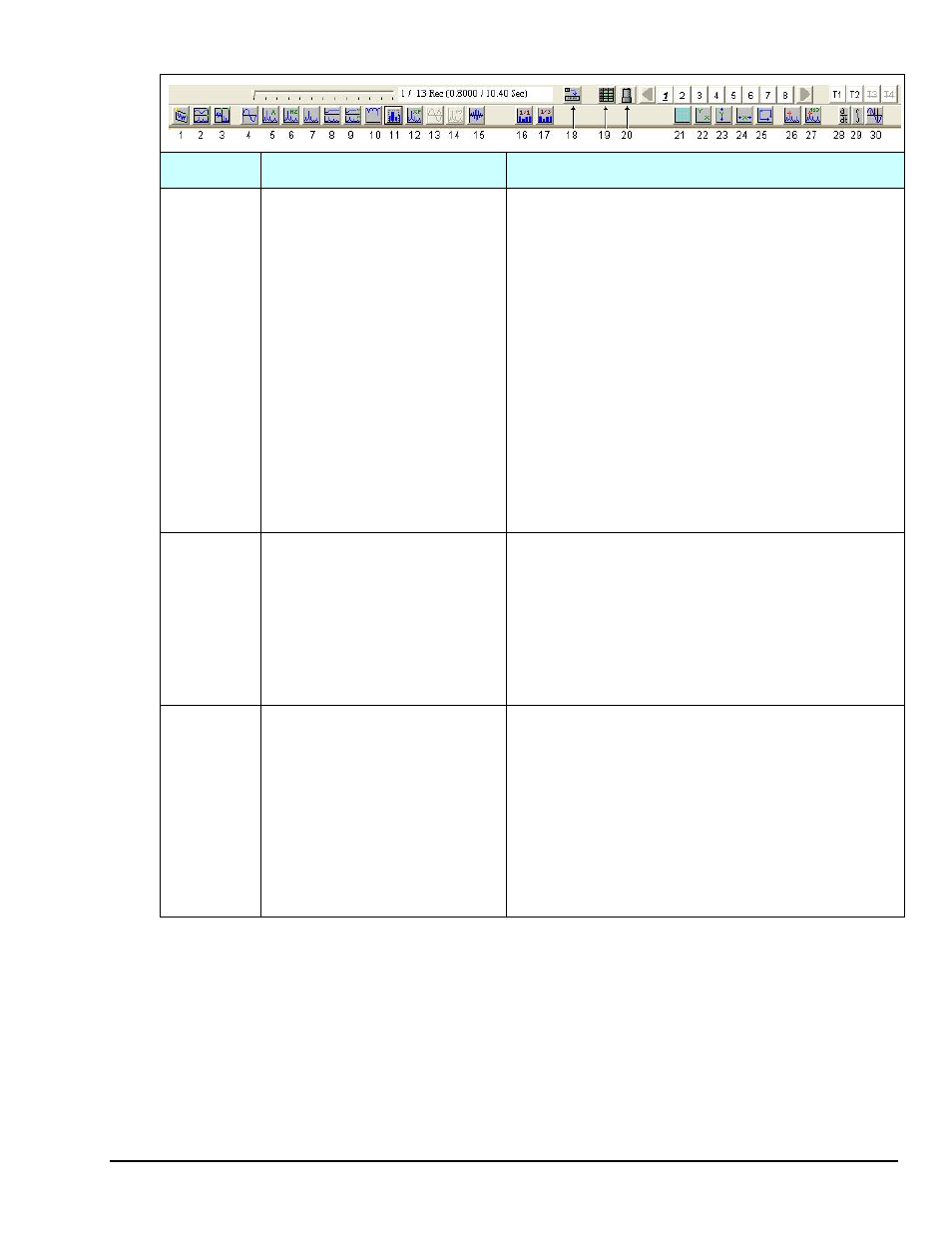Measurement Computing eZ-Analyst rev.14.1 User Manual
Page 95

eZ-Analyst
916994
Toolbar Buttons 5-3
Function
Description / Comments
9
Cross*
A dual-channel display function in the frequency
domain. It is equal to the product of the complex
Fourier spectrum of y(t) (the numerator or first
named channel) times the complex conjugate of the
Fourier spectrum of x(t) (the denominator or second
named channel). The special case y=x yields the
autospectrum. Averaging of these functions
(frequency-domain averaging) forms the basic
foundation on which virtually all other multichannel,
frequency-domain analysis is built. The cross
spectrum is calibrated in units of (peak EUy) (peak
EUx).
When the Cross (#9) or FRF (#8) button is clicked
on; then the following buttons for more complex data
displays become active. The buttons will appear in
the toolbar between buttons #15 and # 21 and are
briefly discussed in the FRF section (preceding row)
of this table.
10
Coherence*
A dual-channel display function. At each frequency,
the coherence is a value between 0.0 and 1.0, which
indicates the degree of consistent linear relationship
between two signals during the averaging process. A
value of less than one indicates that phase
cancellation occurred during cross-spectrum
averaging, which may be due to uncorrelated noise
on one or both signals or to a nonlinear relationship
between signals.
11
Octave*
Many sounds, including audible noise for a
transmission line, are broad band, having
components that are continuously distributed over a
range of frequencies. The spectrum of such a sound
can be approximated in terms of a series of octave
band or one-third octave band pressure levels. A
band is designated by its center frequency, f0, which
is the geometric mean of the upper and lower
frequencies of the band. (See ANSI/ASC S1.6-1984.)
This button activates two Octave Type buttons, i.e.,
Full Octave (#16) and 1/3 Octave (#17).
* Buttons 9, 10, 11 will only be active if there is a “Reference Channel.” A channel can be selected
to “Reference” in the Input/Output Channels Tab via the Response/Reference column.
